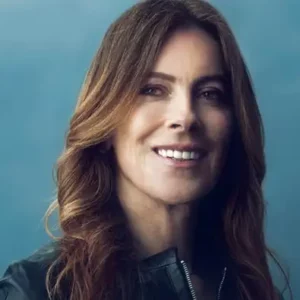
Bigelow is a talented painter. While still at university, whe won a scholarship to the Whitney Museum of American Art’s Independent Study Program in New York that enabled her to create art and have her own studio. She also lived the life of an artist, sharing a loft with then-painter Julian Schnabel (The Diving Bell and the Butterfly) and designer/performance artist Vito Acconci. She also briefly embarked on a real-estate venture that wasn’t very successful. However, she soon decided to turn her eyes to filmmaking, and enrolled at Columbia University School of Arts not long after, from which she got a Masters Degree in 1979.
Kathryn Bigelow’s first film was a 20-minute short called The Set-Up, which looked at violence in movies. In the 1980s, she made two features, biker film The Loveless (1981) – Willem Dafoe’s first movie in a leading role! – and Near Dark (1987), while also directing a music video for New Order.
Then came various movies where she started to develop her trademarks – mainly, her talent for blending genre conventions, her interest in socio-political themes, and her in-your-face approach to violence, with adrenaline-fueled action interlaced with interludes where not much happens that help with characterization. Even though she’s a woman director, Kathryn Bigelow is not a feminist. The director often insists on this matter, as she doesn’t want to be typecast as a feminist filmmaker. She does believe that more women should be directing films, though.
Bigelow often casts high profile stars in her films, from Jamie Lee Curtis in Blue Steel (1990) and Keanu Reeves in Point Break (1991) to Uma Thurman in Mission Zero (2007), Ralph Fiennes and Juliette Lewis in Strange Days (1995), and more. Strange Days also marked her last collaboration with ex-husband James Cameron, who co-wrote the film: the couple filed for divorce in 1991.
Fame came with the multi-Oscar winning The Hurt Locker (2009), which premiered at the Venice Film Festival in 2008 to much acclaim. The film helped break a record, as in 2010, she was the first woman to ever win the Best Director Award at the Oscars. But many more awards came too, such as a BAFTA for Best Picture in the same year. Her next film, Zero Dark Thirty (2012) – a career high for lead Jessica Chastain – was very successful too, though it also sparked controversies for its depiction of violence. Then came the 1967-set Detroit (2017), starring John Boyega and Anthony Mackie.
What happened to Kathryn Bigelow then? Though filmmaker hasn’t released any new movies since 2017, she’s been hard at work. She’s currently directing two movies. The first one, Aurora, written by Jurassic Park’s David Koepp, is about a divorced mother trying to protect her family. Though the film is currently listed as being ‘in development,’ Bigelow would appear to have taken a break from it to focus on her second project first: an apocalyptic thriller produced by Netflix. The movie, which is still untitled, is about an impending missile strike, and revolves around White House staffers trying to handle the situation as tensions rise.
On this page you’ll find all our reviews, articles, and lists of Kathryn Bigelow’s work!